Hybrid eggplant "Clorinda" from Dutch breeders
Eggplants are a fastidious plant and require a lot of attention. But the gardener’s work can be made easier if you choose the right variety or hybrid. Eggplant Clorinda is a first generation hybrid, and if you are well acquainted with the characteristics of this crop and its cultivation characteristics, you will get a tasty, healthy and rich harvest.
Description
Eggplant Clorinda – a hybrid bred in 2006 by the Dutch company Monsanto. And already in 2007, the Russian State Register included the plant in the list of recommended ones for use.
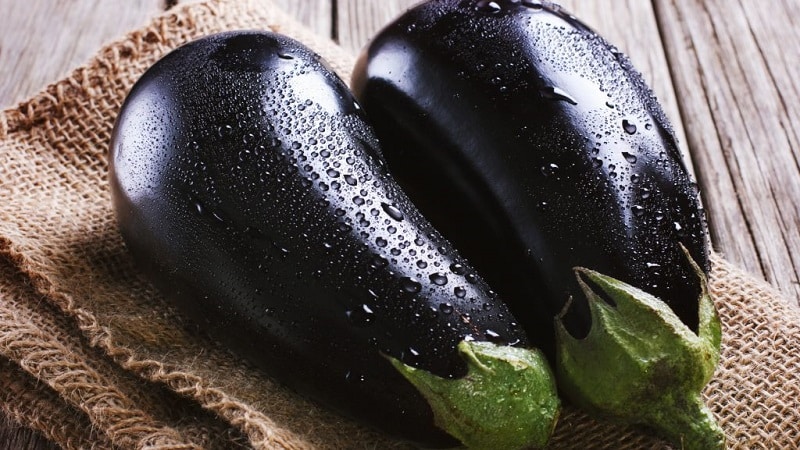
Hybrid F1
On the packaging of Clorinda eggplants you can see the inscription F1, which means that this crop is a first-generation hybrid. In plant growing, a hybrid (from the Latin word hybrid - cross) is an organism that is formed by crossing different varieties.
Important! The parent plants must be of the same species, but as different as possible from each other; only under such conditions will a strong F1 hybrid be obtained.
When crossing several varieties, the first generation hybrids are most valued, since they are the ones who receive the best qualities from their parents. But in the next generations, the weaknesses of the parents will most likely be in the lead, and sometimes a mutation may occur. For this reason, it is best not to collect seeds from plants produced from F1 hybrids.
What are the advantages of F1 hybrids and why are they so valued? Here are their main positive characteristics:
- have only positive qualities obtained from parent varieties;
- easily adapt to unfavorable conditions;
- may be superior to their parents (in such cases, hybrids will be called heterotic);
- high resistance to diseases and pests.

Despite all the advantages of the first generation offspring, some gardeners there are also disadvantages:
- purchasing planting material only in stores, since it is impossible to obtain seeds from hybrid plants;
- the price is higher than regular seeds.
About other varieties of eggplant:
Yield and early ripening eggplant variety "Bourgeois"
Distinctive features
Eggplant Clorinda - an early and productive species, which has its own distinctive features:
- the pulp is whitish in color with a dense structure;
- has an excellent taste, does not taste bitter and does not oxidize for a long time;
- eggplant fruits are oval or pear-shaped, dark purple in color, medium size - from 12 to 20 cm.
Characteristics
Eggplant Clorinda has the following characteristics:
- the bush is straight and semi-spreading, approximately 70–80 cm high outdoors and 90 cm in a greenhouse;
- the stems, like all types of eggplants, are purple in color;
- medium-sized leaves with serrated edges;
- the weight of the fetus reaches approximately 0.3 kg, sometimes it can reach up to 1 kg;
- There are few seeds in the fruits.
How to grow this variety yourself
Growing eggplant Clorinda occurs in several stages: obtaining seedlings, transplanting and further care.
Growing seedlings
To get healthy strong seedlings, follow the sequence of these actions:
- Preparation. Before planting, you must carefully examine the seed package.There are processed and unprocessed Clorinda seeds; this information should be on the packaging. If the seed is not processed, you will have to carry out the procedure yourself. Seeds are disinfected in a 1% solution of potassium permanganate for 20 minutes and immediately before planting, they are soaked in one of the growth stimulants. For example, “Epin” is suitable.
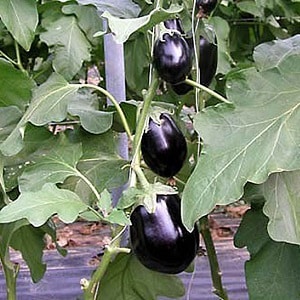 Landing. The seeds are planted in a separate container to a depth of 2-3 cm, then the soil is watered and covered with film or glass.
Landing. The seeds are planted in a separate container to a depth of 2-3 cm, then the soil is watered and covered with film or glass.- Care. Until the seeds have sprouted, maintain a temperature of +25...+28 °C and moisten the soil as it dries. 2-3 days after the first shoots appear (about 10–14 days), the temperature is lowered to +24...+25 °C during the day and +14...+15 °C at night. In order for a good harvest to grow, the daylight hours for Clorinda eggplants should be 12–14 hours. Watering - with warm water, at the root. Feeding - with complex fertilizers every two weeks.
Attention! Clorinda eggplant seeds are planted in the first or second ten days of February immediately in separate containers, since they do not tolerate picking. Peat or plastic cups work well.
As soon as the plants have 8-9 true leaves, they can be planted in the ground. This usually happens in mid-May.
Transfer
For a good harvest, the soil in which eggplants will grow must be prepared: dug up and fertilized. This can be done this way: water the soil with a solution of copper sulfate (5 g per 10 liters of water), this will get rid of parasites, and then fertilize.
Not every soil is suitable for planting the Clorinda variety. For example, You can’t plant eggplants after potatoes, peppers, tomatoes, it is not recommended to grow them in the same place for several years in a row.The best predecessors for the crop are carrots, onions, cabbage, and legumes. The transplant is carried out before budding: it will be more difficult for the plant to get used to new conditions if it already has ovaries.
 The process of planting seedlings consists of several stages:
The process of planting seedlings consists of several stages:
- Make holes 20 cm deep, the distance between them is approximately 30 cm. 1 liter of a weak solution of potassium permanganate is poured into each hole.
- Carefully remove the plant along with the soil from the container and lower it into the hole (if the bush is in a peat pot, there is no need to remove it).
- Water the hole with the plant generously and sprinkle with loose soil. After planting, the eggplants are sprinkled with dry soil or humus and allowed to “rest” for 20 days. During this time, the bush will need only moderate watering.
Further care
During the growing process, it is recommended to form a bush. The procedure is not mandatory, but if you want to have strong and compact plants in the garden, you cannot do without it.
When the height of the plant reaches 30 cm, it is pinched. As a rule, only 4–6 of the rapidly growing shoots are saved, and the rest are removed, as are yellowed leaves.
Water the plants with warm water at the root once every 10–12 days, and if the weather is dry, then once every 7 days. After moistening, it is advisable to loosen the soil around the bushes.
Read also:
Heat-loving eggplant hybrid “Valentina f1”
What is good about the eggplant “Ilya Muromets”: features of agricultural technology
Features of cultivation and possible difficulties
One of the main features when growing eggplant Clorinda - regular feeding. They will need to be fertilized at least 5 times in one season, using new organic mineral additives each time.
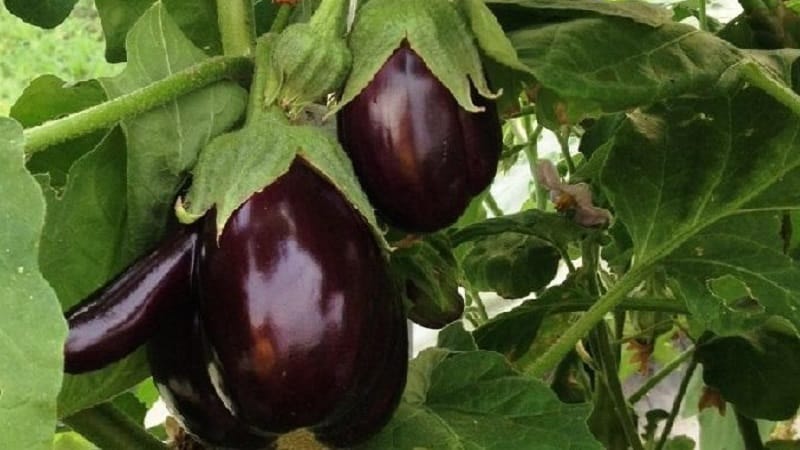
If eggplants are planted in open ground, then they will have to be covered at night and in cool weather.
If the rules are not followed seed preparation, germination and planting, light and water conditions, Clorinda may get sick.
Diseases and pests
This eggplant hybrid is resistant to tobacco mosaic virus, but often gets sick with blackleg and various rots.
One of the most dangerous pests is the Colorado potato beetle., bugs and spider mites, which eat up the entire plant completely. You can get rid of them by spraying the bushes with insecticides or using traditional methods: treat with infusion of onion or dandelion with the addition of laundry soap.
Harvesting and application
Three months after sowing the seeds, you can harvest the first harvest. As soon as the eggplants are ripe, they must be cut off immediately, otherwise the number of ovaries may decrease.
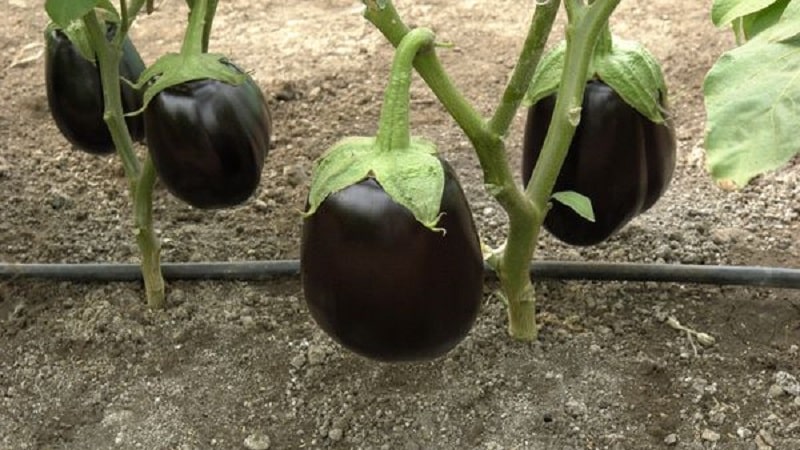
Reference: Eggplant pulp contains many useful substances: potassium, copper, iron salts. It is thanks to these elements that fruits improve the functioning of blood vessels, heart, kidneys and liver, and reduce cholesterol levels.
Eggplant Clorinda can be stored for up to two months at a temperature of 6-7 ° C.
Vegetables are fried, baked, marinate, dried or freeze fruits for longer storage.
Advantages and disadvantages
The hybrid eggplant Clorinda has its advantages and disadvantages.
| Advantages | Flaws |
| Good and tasty harvest | The seeds are not suitable for further planting |
| Resistance to weather conditions, diseases and pests | Dear seeds |
| Few seeds | |
| Grow both in greenhouses and in open ground |
Clorinda has more advantages than disadvantages, this explains the popularity of the hybrid.
Reviews
More often gardeners leave positive reviews about Clorinda eggplants, noting 100% seed germination and ease of cultivation.
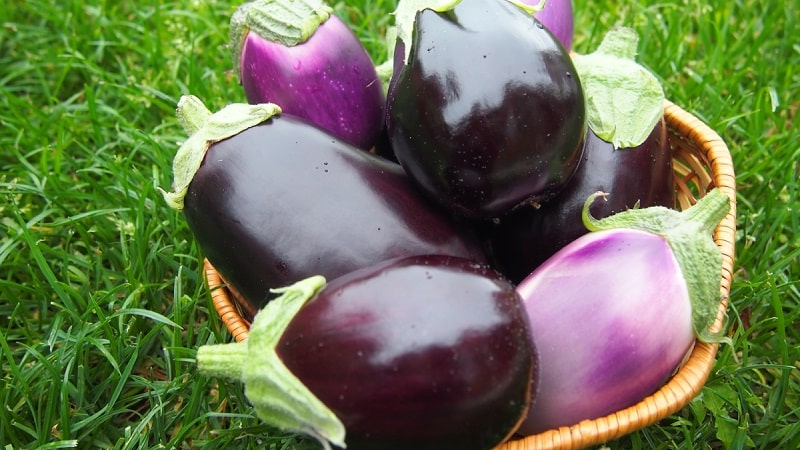
Tamara Pavlovna, Magnitogorsk: “Eggplant Clorinda is very tasty. I planted this hybrid for the first time and did not regret it. It is resistant to weather conditions and does not require any special skills to grow. I store eggplants in a drawer with parchment between them, so they stay fresh longer.”.
Irina Olegovna, Krasnodar: “Recently, I was diagnosed with kidney problems, in addition to medications, the doctor advised me to include eggplants in my diet. I chose the hybrid Clorinda. To be honest, I didn’t expect that eggplants could be so tasty. The pulp is quite dense, but what pleased me most was the absence of seeds. Despite all the difficulties that may arise during planting and soil preparation, it is worth it!”
Conclusion
Eggplant Clorinda is a beautiful vegetable with an extraordinary taste and appearance. If you follow all the rules for planting, soil preparation, watering, and care, eggplants can be grown on your own plot. And with proper storage, it will be possible to save part of the harvest until the New Year's table.
The hybrid is resistant to adverse weather, diseases and pests. The Clorinda eggplant bears fruit well and pleases with delicious fruits of an original taste with a small amount of seeds inside.
This is the most delicious eggplant! I've been growing it for over 10 years. The fruits are large, up to 1kg. The yield is good, the pulp is white, without seeds. Believe me, it tastes different from all varieties, completely without bitterness and sweetish. I recommend!